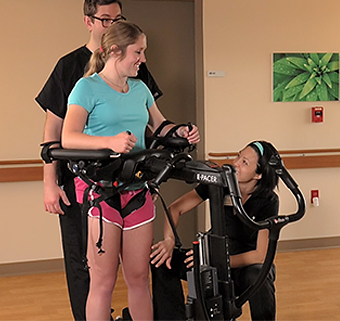The Rifton TRAM vs. the Standard Four-Wheeled Walker
| December 2014 For those of us concerned with rehab following central nervous system lesions, the last ten years have been exciting. There has been extensive research focused on the brain and its neuroplastic properties, and it’s changing the way we think about treatment.
For those of us concerned with rehab following central nervous system lesions, the last ten years have been exciting. There has been extensive research focused on the brain and its neuroplastic properties, and it’s changing the way we think about treatment.
Specifically, recent research has encouraged gait rehabilitation – task-specific and repetitive. We all recognize now that ambulation improves health and leads to greater independence (and results in earlier hospital and clinic discharge). Equally acknowledged is the benefit of starting rehab early. With earlier intervention we can expect far more recovery than we typically see in the normal period of spontaneous recovery. All this has given rise to the increased use of gait or ambulation devices. Most common among these is the standard four-wheeled walker.
The four-wheeled walker has its place, but there are better options. The Rifton TRAM is ideally suited for early gait rehabilitation because it provides additional support during ambulation as well as supported sit-to-stand transfers. And it provides this additional support without sacrificing size or maneuverability; the TRAM is surprisingly light, compact, and home-friendly.
Clinicians at Magee Rehab in Philadelphia, one of the premier rehab hospitals in the country, note that the Rifton TRAM is even useful for the initial standing and weight-bearing practice prior to gait training, particularly among their SCI clientele, or with patients whose skin-integrity issues preclude use of a standing frame or tilt table. Other clinicians report that their patients who are afraid of falling love the TRAM for the security it provides.
Dr. Karen McCain, director of the neurological PT residency program at UT Southwestern in Dallas, notes that the TRAM is “magical” for those with poor trunk control. She also reports that she’s had success using the TRAM for a wide variety of diagnoses such as low-functioning MS, TBI, amputation, and general ataxia.
Ongoing research supports the premise that rehabilitation gait training, if started early, results in improvements in gait parameters. The Rifton TRAM plays a useful role this setting through the provision of sit-to stand transfers and over-ground gait training in a supported and safe manner, enabling clients to initiate early ambulation practice for optimal recovery.




